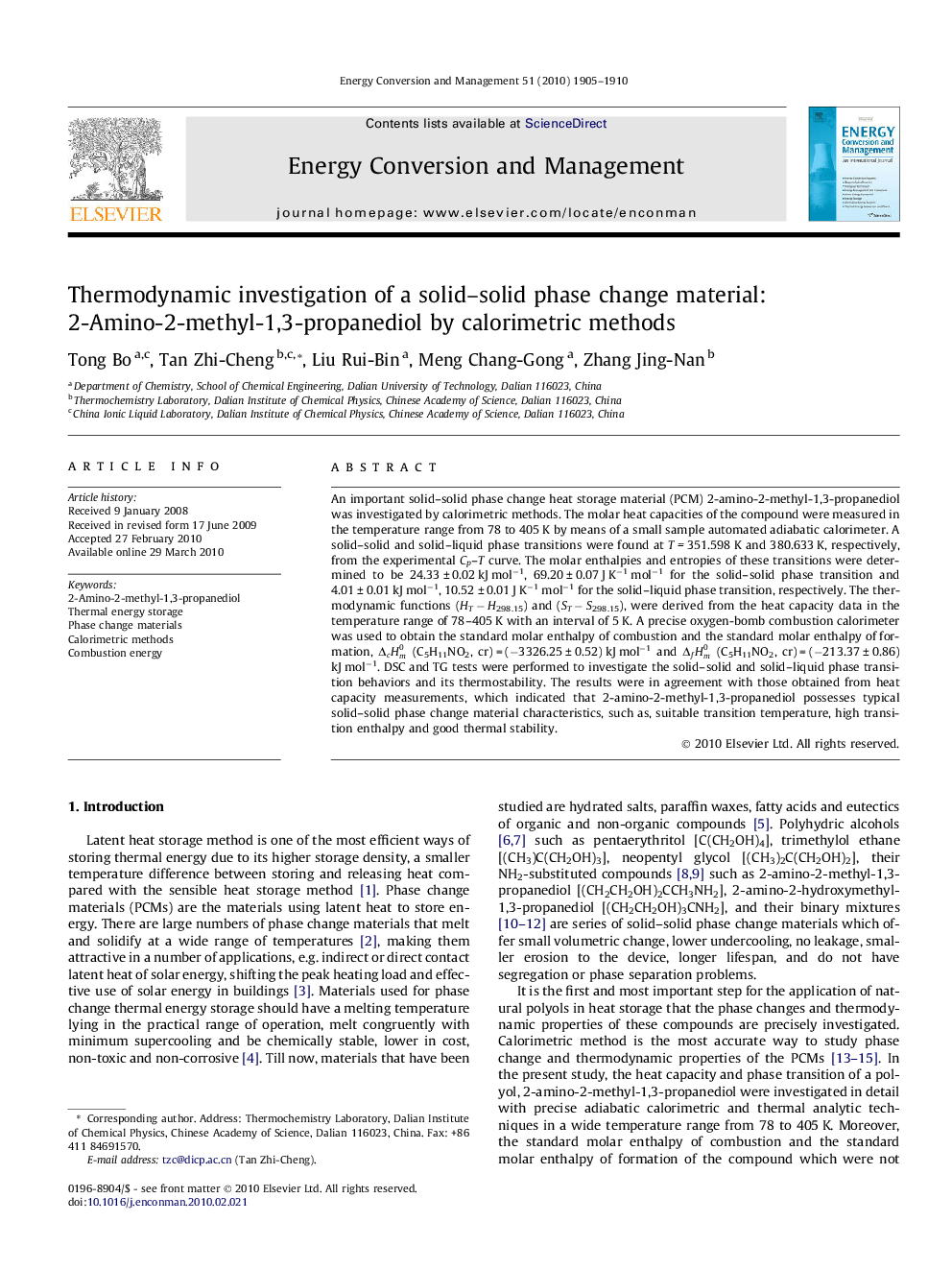| Article ID | Journal | Published Year | Pages | File Type |
|---|---|---|---|---|
| 772556 | Energy Conversion and Management | 2010 | 6 Pages |
An important solid–solid phase change heat storage material (PCM) 2-amino-2-methyl-1,3-propanediol was investigated by calorimetric methods. The molar heat capacities of the compound were measured in the temperature range from 78 to 405 K by means of a small sample automated adiabatic calorimeter. A solid–solid and solid–liquid phase transitions were found at T = 351.598 K and 380.633 K, respectively, from the experimental Cp–T curve. The molar enthalpies and entropies of these transitions were determined to be 24.33 ± 0.02 kJ mol−1, 69.20 ± 0.07 J K−1 mol−1 for the solid–solid phase transition and 4.01 ± 0.01 kJ mol−1, 10.52 ± 0.01 J K−1 mol−1 for the solid–liquid phase transition, respectively. The thermodynamic functions (HT − H298.15) and (ST − S298.15), were derived from the heat capacity data in the temperature range of 78–405 K with an interval of 5 K. A precise oxygen-bomb combustion calorimeter was used to obtain the standard molar enthalpy of combustion and the standard molar enthalpy of formation, ΔcHm0 (C5H11NO2, cr) = (−3326.25 ± 0.52) kJ mol−1 and ΔfHm0 (C5H11NO2, cr) = (−213.37 ± 0.86) kJ mol−1. DSC and TG tests were performed to investigate the solid–solid and solid–liquid phase transition behaviors and its thermostability. The results were in agreement with those obtained from heat capacity measurements, which indicated that 2-amino-2-methyl-1,3-propanediol possesses typical solid–solid phase change material characteristics, such as, suitable transition temperature, high transition enthalpy and good thermal stability.
